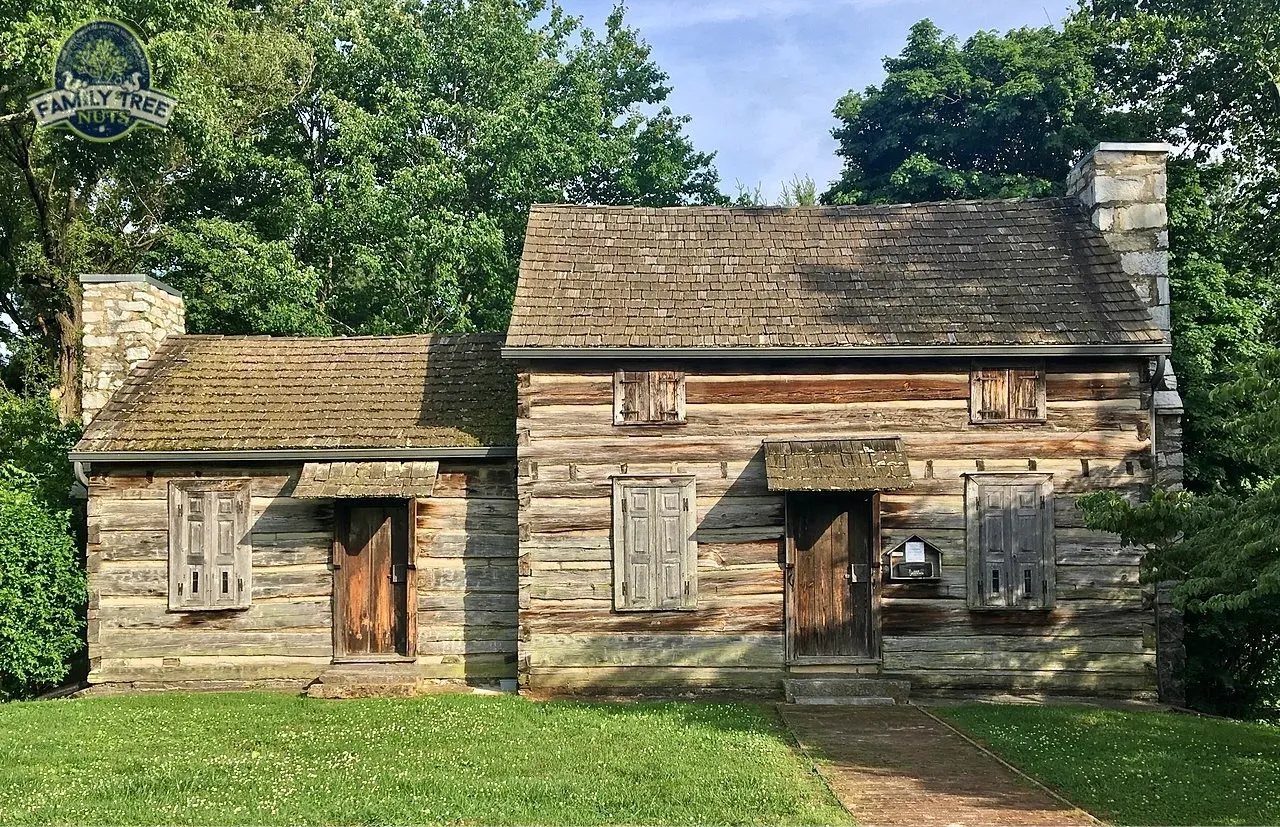
DAVY CROCKETT FAMILY TAVERN
He was known as “The King of the Wild Frontier”, a soldier, a politician, a state representative, a United States congressman, a prolific storyteller, a wild game hunter, and an Indian fighter. Who else could it be, but the legend, Davy Crockett, the original Tennessee Volunteer. Who remembers on Sunday nights watching Fess Parker as Davy Crockett, and George Russell as his sidekick on Disney? If you do, I bet you remember the song, “Born on a mountaintop in Tennessee, greenest state, in the land of the free. Raised in the woods so he knew every tree, kilt him a bar, when he was only three. Davy, Davy Crockett, King of the Wild Frontier.”
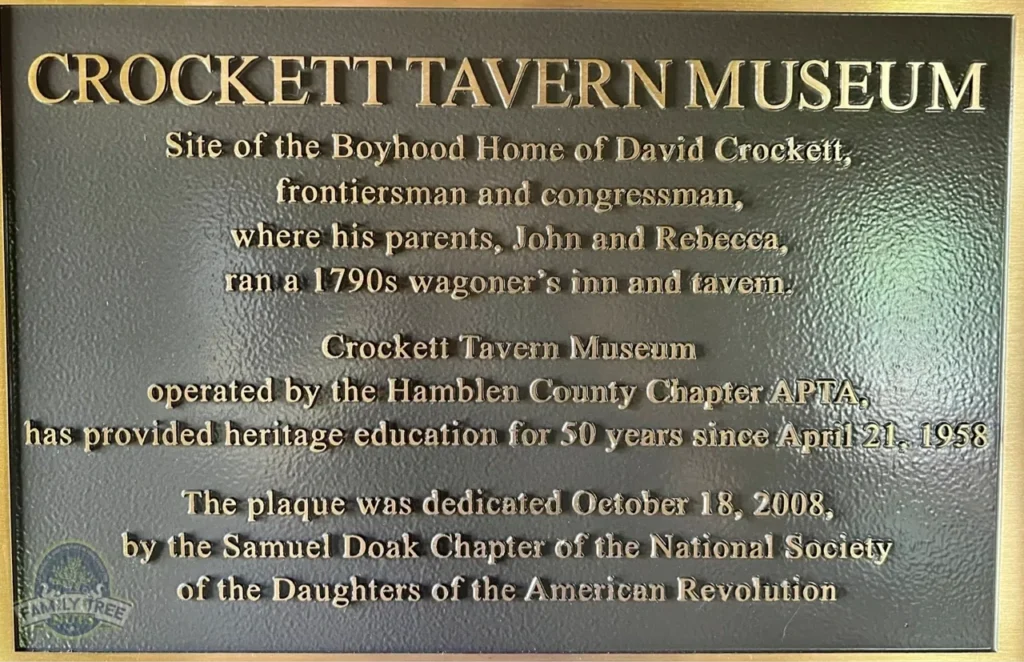
In Morristown, Tennessee stands what is called, The Crockett Tavern. It is a recreation, but stands on the site where the original tavern was located and built in 1794. When it was built, there wasn’t a town here, all that was there was a path that had been made by animals, Indians, and settlers coming through. They built a new wagon road that went from the West, back to the East, through the mountains, up into Virginia and there was quite a bit of traffic that passed through there. Davy’s parents, John and Rebecca Crockett, came and built a tavern along the new wagon road. With all of the western expansion through the Appalachian Mountains during those days, there were thousands of settlers pouring into that part of what is now East Tennessee. If you’ve ever crossed the Appalachian Mountains, even on the modern roads, you can imagine hacking your way through those steep forests, and ridges, with a wagon, and everything you owned, and your family trying to get through the Appalachians to settle on the other side of the mountains. It took weeks for people to cross the mountains, so there began to be inns and taverns along the way because people had to stop and spend the night. The Crockett Tavern was one of them.
So how did John and Rebecca Crockett happen to be here in that area? Well, when they came across the mountains as settlers, they lived about 30 miles east of the tavern at the Nolichucky Settlement for several years. The river overflowed and flooded their cabin, which caused them to decide to move a further west because they had heard about the new road that was being built. The road was simply a dirt path that was very hard to travel, especially when it was muddy or frozen, but they knew that there was an opportunity for an inn and tavern to be built along that new road. Davy Crockett was about eight-years-old when the family moved and he lived there for several years. There was a constant flow of people coming and going through this area of what is now East Tennessee. People were traveling from west to east, bringing livestock, produce and hides to be sold in the east, as well as settlers moving west into the area.
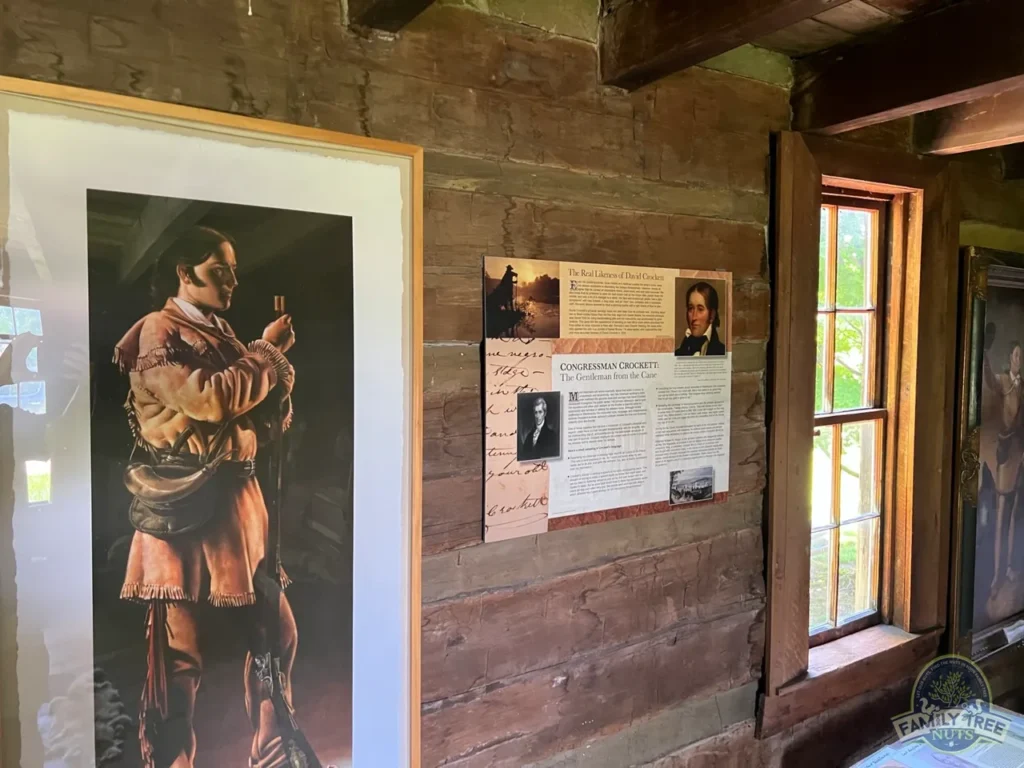
When John Crockett opened his tavern, he was heavily in debt, and in order to help pay the expenses, he indentured his son Davy out to a local cattleman. For several years, Davy participated in cattle drives that went from East Tennessee to markets in Virginia, to help his family pay the expenses for the tavern. Eventually Davy returned home and was enrolled in a local school, but needless to say, that didn’t go well. Davy was an explorer, and he constantly wanted to be moving to new areas, and sitting in the classroom did not sit well with him. One day, he skipped school, and his mom and dad found out, but rather than face their wrath when he came home, he went back on the road again to work with the cattle drives for a few more years.
By this time, Davy was a young teenager and it was during these years that Davy realized that he had to keep moving all the time, he was an explorer, he wanted to hunt, and he didn’t really want to be in one place very long. In 1806, Davy married a lady named Polly Finley and they moved about 30 miles further west of his parent’s tavern, into what is now Jefferson County, Tennessee. They lived in an area called Mossy Creek, on land that was owned by her father, and soon they had three children. Davy spent most of his time hunting, trapping and fishing to make his living in the wilderness. More, and more people were moving into the area, so it wasn’t long before Davy felt the need to move further west, out into the frontier, to get away from the crowds. They moved to an area that is now known as Lincoln County, Tennessee, in the central part of the state, just north of the Alabama line.
A few years later, The War of 1812 broke out, and Davy joined with the Tennessee Volunteer Mounted Rifleman to serve under General Andrew Jackson. His unit went down to southern Alabama near the Gulf Coast, and fought in the Creek Indian Wars. Due to his superior knowledge and experience being in the wilderness, his superiors sent Davy ahead of the army to scout out areas and locate the enemy. Davy’s enlistment ended, in 1813 and he returned back to his home in Lincoln County. It wasn’t long before the family moved again to Franklin County, in an area called Beans Creek. He built a new home there that he named “Kentuck”, because Davy had a strong affinity for Daniel Boone, and all that he had done in Kentucky.
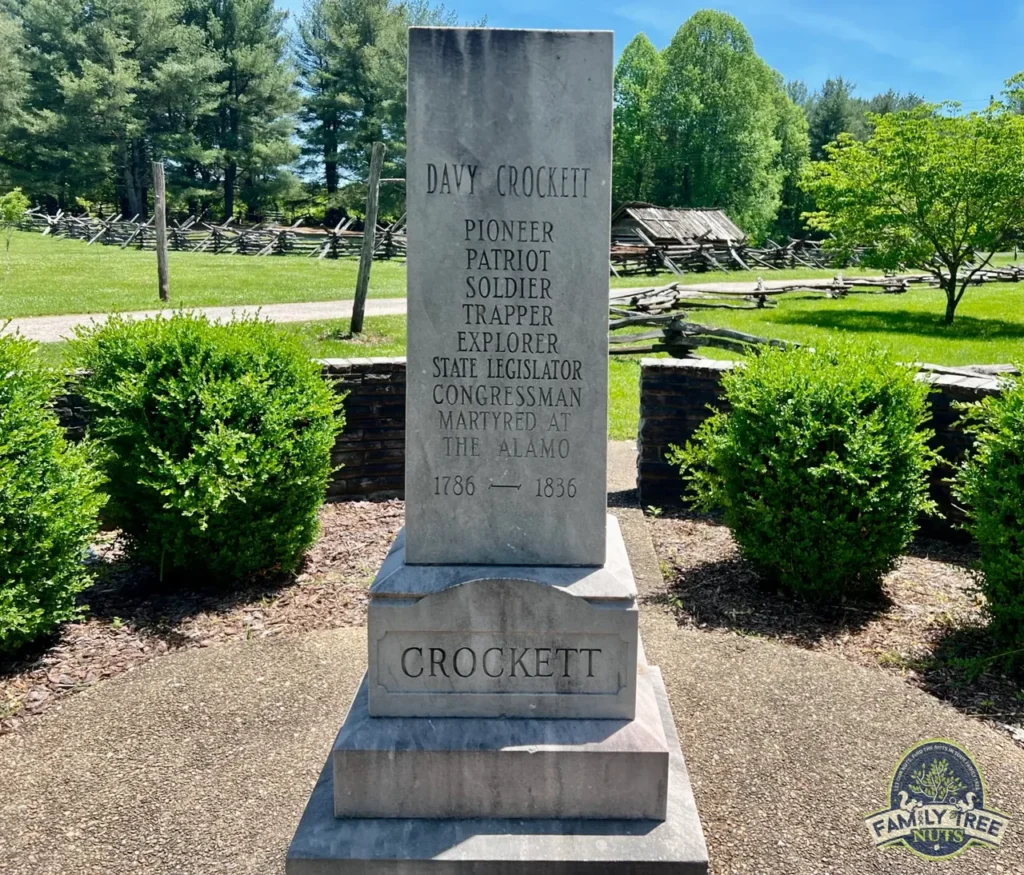
Sadly, in 1815, Davy’s wife Polly passed away and left him there in the wilderness with three children. It wasn’t long before he met a new widow named Elizabeth Patton and married her. Elizabeth brought three children of her own to the marriage, bringing the total to six. Davy and Elizabeth had two more children together to bring the total to eight. Davy continued to hunt, fish and trap to make a living, often being gone for long spells. Soon, the family moved west again, to Lawrence County, Tennessee, to an area called Shoal Creek. Here Davy made a living operating a powder mill, a grist mill, and a distillery. The family lived at Shoal Creek for several years, and he became very popular in the area, and was soon elected to the Tennessee General Assembly. This Crockett homestead is located outside of present day, Lawrenceburg, Tennessee, at the Davy Crockett State Park. The park has a recreation of his home place, including his cabin and mill. It’s a great place to visit if you’re ever in Southern-Middle Tennessee
Tragically, in 1821, like his birth place, Davy’s homestead at Shoal Creek was flooded. This event caused the family to move yet again, to Carroll County, in Western Tennessee. In those days, that area was still considered the western frontier of the young United States. It wasn’t long before his fame followed him and the people there in Carroll County elected him to serve again in the Tennessee General Assembly. During this time, he also served as a lieutenant colonel in the Tennessee militia. His popularity continued to grow, and in 1827, he was elected to the United States House of Representatives to represent the western part of Tennessee. He had great speaking skills and was becoming well known in Washington.
It was during this time that he became known as an American folk hero, as many wild, tall-tale stories were being told about him all over the country. Davy embraced the image that worked for his political advancement. While serving in Congress, Davy opposed President Andrew Jackson’s Indian Removal Act, which called for the forced moving of Native Americans from Tennessee, to Oklahoma. His opposition of the very popular President cost him his reelection, and he was ruined politically in Tennessee. Another story of note about Davy’s time in Washington, was that that he ironically prevented an assassin who attempted to kill President Jackson.
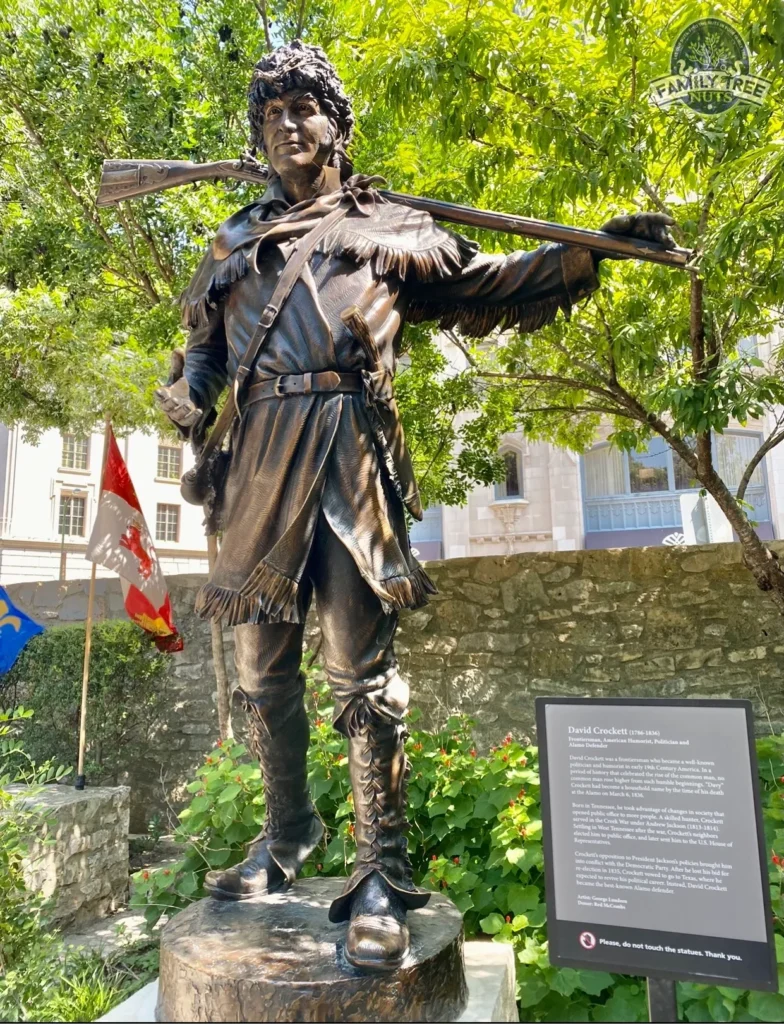
When Davy got back home, he was angry because he had lost his reelection bid. He told the people of his district that he had served them well, but “you may all go to hell, and I will go to Texas”. Davy joined a 30-man brigade of Tennessee Volunteers that went to Texas, where he swore allegiance to their new provisional government in exchange for land. In his last letter to his family, dated January 9, 1836, he told his family that he found the territory of Texas to be a land of opportunity, and he planned to settle and to move his family there.
A few weeks later, he and the Tennessee Volunteers arrived in San Antonio at the Alamo Mission, which would soon be in dire straits because it was going to be under siege by the Mexican army. A few days before the siege, Lieutenant Colonel William Barrett Travis sent a letter to Sam Houston, where he stated that the honorable Davy Crockett was seen moving around the mission, encouraging the men to do their duty. It wasn’t long before that duty was called upon, and on March 6, 1836, General Santa Anna and the Mexican army put the Alamo mission under siege. The Texans fought them off for 13 days, but they were eventually overrun, and they were all killed. Contrary to the account of his death in the popular movies, a Mexican officers diary surfaced in 1955, which gave a more accurate description of what happened on that last day, when Davy Crockett and others were found in the mission. They were located in one of the rooms, and they were taken and interrogated. Soon they were put to the sword, their bodies taken out in front of the Alamo, where they were all burned.
The Mexican army couldn’t hold the mission, and it was not very long before the Texans were back in control of that area. Historians say that the ashes and the pile of bones that were burned in front of the Alamo, were still there. Believing that those ashes were the remains of the combatants at the Alamo, they were taken and put in a secret burial vault under the San Fernando Cathedral in San Antonio. Then by accident in 1936, those remains were unearthed, and placed in a decorative sarcophagus. The sarcophagus is on display at the Cathedral and
you can see it today.
After Davy’s death, the Republic of Texas awarded his wife 640 acres as compensation for his service in the war. The property was located in Hood County, Texas, and his wife moved there and stayed until her death. Elizabeth’s grave has a statue of her, on top of a pillar, looking to the west, shading her eyes looking for her husband that was so often gone. Their son, Robert Patton Crockett also lived there and buried on the property.
Today, there are interesting artifacts that belong to Davy, located in the Tennessee State Museum in Nashville. Some of the things you will find there is the copy of the check for $237 that was sent to Davy’s widow Elizabeth, in 1837, from The Republic of Texas. Also, there are portraits of Davy, a powder horn, and a knife that belonged to Davy, that were unearthed on one of his homesteads in Tennessee, as well as lot of general information about Davy Crockett.
Did you know that during the Cold War, there was a nuclear weapon system developed by the United States military, that they named the Davy Crockett Nuke? This concludes our short story about Davy Crockett, the American patriot, folk hero, frontiersman, and he killed a bear when he was only three. At least that’s what they said. Be sure to see our video below.
– Scott Denney, Historian, Family Tree Nuts
